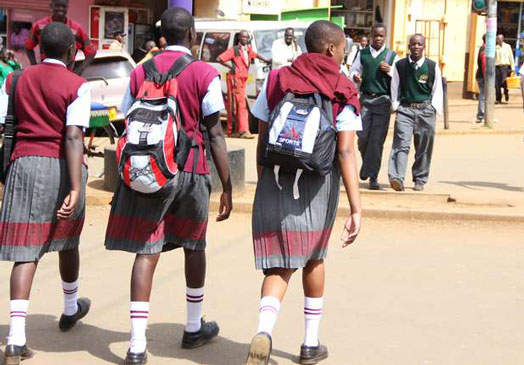Closing Dates For Secondary Schools Adjusted Backwards. Principals of secondary schools have stated that because the government has not yet paid the full amount of capitation funds owed to schools for this year, they will be compelled to close earlier than planned.
Schools are unable to buy the required materials for the upcoming Kenya Certificate of Secondary Education (KCSE) exams and end-of-year exams for students in other classes, according to a warning from the Kenya Secondary Schools Heads Association (KESSHA).
Under the Free Day Secondary Education initiative, the government has given Sh15,192 of the planned Sh22,244 per learner annually for tuition, and has instructed schools to deposit Sh3,850 for infrastructure.
This leaves only Sh11, 342 per learner to used on tuition and operations. The capitation has been declining over the years as enrolment increases in public schools.
“There’s already a serious financial crisis in schools and it is not possible to complete the term, if the remaining capitation is not released. It is unfortunate that school staff will have to go without salaries. We’re very worried that the debt burden in schools is getting out of hand,” Kessha chair Willy Kuria warned.
The association has also warned that schools might have to close before the official date of October 25 2024, if the government does not release full capitation.
Some of the schools have already planned to send their learners for third term vacation by October 18 2024 to avert the financial crisis.
Closing Dates For Secondary Schools Adjusted Backwards
“The school shall close on October 18 2024 save for the KCSE candidates as we have no enough funds to sustain the rest of the students,” said a school principal in Maralal Town.
Mr Kuria said if the remaining capitation is not released staff employed by the schools will proceed to the long holidays without salaries.
“KESSHA wants to state that this amount is too little considering it is just half of the Sh22,224 that is budgeted for tuition and operations,” said Mr Kuria who also doubles as the principal of Murang’a High School.
KSSHA argues that the infrastructure fund is not supposed to come from the capitation but from the CDF (Constituency Development Fund) and the transition infrastructure grant fund from the Ministry of Education.
“The capitation is purely for tuition and operations. KESSHA urges the treasury to release the remaining Sh6,000 per learner so that schools can be able to purchase the necessary facilities for the forthcoming KCSE and end-of-year examinations for other learners,” said Mr Kuria.
The capitation is generally used for the purchase of stationery like exercise books, lab equipment, and chemicals, co-curricular activities, salaries for Board of Management (BOM) teachers and non-teaching staff, bills like electricity, water, local transport and travel, and administrative costs, among other overhead costs.
KSSHA said the mounting debt burden in schools is getting out of hand. Some schools have been dragged to court by suppliers over non-payment of debts while others avoid supplying to schools on credit.
